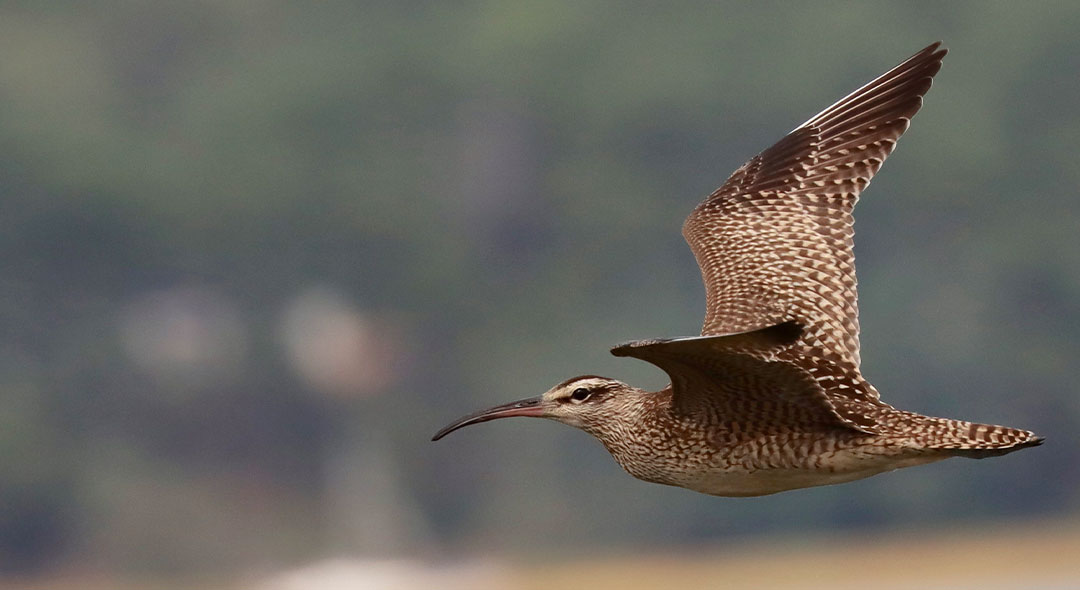Search Results

Manomet’s First Massachusetts Shorebird Blitz
One, two, three…go and count those shorebirds! That race-like tenor of excitement buzzed through many of us as we launched the Manomet’s first annual Massachusetts Shorebird Blitz. The blitz, organized by Manomet’s Cape Cod Shorebird Biologist Liana DiNunzio, Conservation Biologist Alan Kneidel, and North America ISS Coordinator Lisa Schibley, took place this past August 5-14 as a coordinated effort to survey key shorebird stopover sites throughout coastal Massachusetts during peak southbound migration.
The Gift of a Lifetime
Meet Eric McNulty, a longtime Brookline, Massachusetts resident, bird enthusiast, author, speaker, and instructor at the Harvard T.H. Chan School of Public Health. He shares how he was introduced to Manomet, and why he joined the Widewater Society in 2020.
From The Field: Fall 2023
First Ever Amazon Shorebird Workshop Manomet recently led a team of 15 specialists from 7 partner organizations on a 10-day onsite workshop to observe shorebird use along the Brazilian Amazon River. Juliana Bosi de Almeida, Manomet’s Managing Director, Flyways, coordinated the effort, which is the first ever of its kind. The activities in Brazil are part of a larger project to understand how many shorebirds use the Amazon Basin rivers as stopover sites, and how they distribute themselves in this region, which is greater than two thirds of the continental United States.
Attention Species: Manomet Is Watching
How collaborative monitoring and measuring is imperative for a healthy future BY GERRY OLSON
Kathleen (Betty) Anderson Nature Trail Dedication
To all who knew her, Betty, who founded the Manomet Bird Observatory and served as its President for many years, was a visionary. Let Betty’s curious nature be your inspiration: we welcome you to Manomet Headquarters at 125 Manomet Point Road in Plymouth, MA, from dawn to dusk daily to enjoy your own trail walk.
Arctic Nesting Whimbrels – 2023
The drone of the Cessna 185’s motor had just faded into the distance when we heard the first Whimbrel calling as it flew overhead. It is difficult to convey the sense of relief and excitement from hearing that single call. Kirsti Carr and I had just been dropped as the first on the ground at a new field site on the Jago River in the Arctic National Wildlife Refuge, while the pilot went back to pick up the rest of the team, three biologists working for the US Fish and Wildlife Service (USFWS). Kirsti works for Point Blue Conservation Science, but had worked with Manomet and the USFWS in previous summers conducting arctic shorebird research. Dr. Sadie Ulman, Robyn Thomas,...
How Many Did You Say?
By Brad Winn A single Red Knot flew down out of the clouds over Paraguay on September 17 this year. It landed on the exposed wet sand at the mouth of the Pilcomayo River, close to the city of Asunción. Major rivers in this part of South America are exceptionally low for the second year in a row as drought continues to grip the vast Pantanal region of Brazil located to their north. The low water is creating an abundance of exposed mud banks and sand bars downstream of the extensive dryness. Open, wet sand has the promise of food just under the surface for hungry shorebirds, and this Red Knot read the cues, landed, and was photographed probing the...
Whimbrels in the Arctic
Shiloh Schulte, Manomet’s senior shorebird scientist, recently spent four weeks in the Arctic National Wildlife Refuge, continuing several studies delayed by COVID-19. Working closely with the U.S Fish and Wildlife Service, Shiloh deployed GPS tracking tags on Whimbrel, American Golden-Plovers, Pectoral Sandpipers, and other species as part of an ongoing study of local movement patterns and long-distance migration pathways and stopover sites. In addition to the tracking work, Shiloh collaborated to develop methods for remote monitoring of shorebird nests and mentored new USFWS technicians and volunteers. Shiloh recently shared his experiences on Alaska's Katakturuk River tagging Whimbrels to study local movement patterns and long-distance migration pathways and stopover sites. I have been lying flat in the sedge, hiding behind a...
A phenomenal discovery, bringing a glimmer of hope to a declining species of bird
It’s not every day that someone discovers a new-to-science bird migration spectacle. It’s even more unexpected that such an encounter – in this case, tens of thousands of Whimbrel gathering during their annual journey north – would be just a stone’s throw from a metropolitan area. Deveaux Bank is a small, horseshoe-shaped island located at the mouth of the North Edisto River in Charleston County, South Carolina. Scientists have long been aware that it is an important place for birds. The island hosts a huge colony of pelicans that nest there, significant numbers of American Oystercatchers, and many other shorebirds and seabirds. But, what South Carolina Department of Natural Resources (SCDNR) biologist Felicia Sanders and a team of researchers, including...
Shifting Tides
For nearly a decade, Anne Hayden’s work at Manomet has focused on restoring marine habitats and rebuilding sustainable fisheries. Throughout her career, Anne’s work has focused on planning and management for Maine’s watersheds, building engaging and inspiring educational programs and courses, restoring marine habitats, and rebuilding sustainable fisheries. Through social and natural science, she has worked to understand the dynamics of the marine ecosystem and align economic incentives with environmental stewardship. In addition, she has worked to restore sustainable and resilient fisheries in the Gulf of Maine and strengthen adaptive co-management to promote healthy marine ecosystems and thriving coastal communities. At the end of June 2021, Anne will be retiring from Manomet, leaving behind a long list of accomplishments and...



